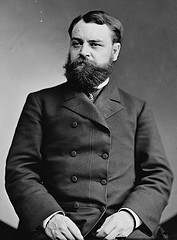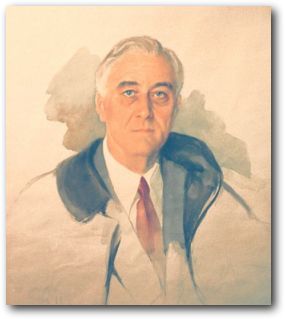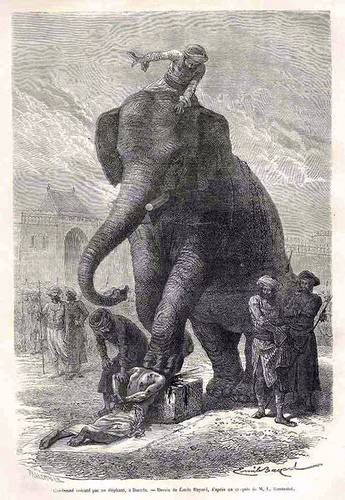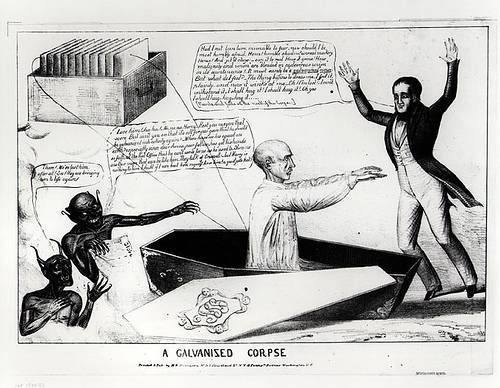Baseball ain’t always pastoral. In 1920, the Yankees’ Carl Mays pitched a dirty ball against Cleveland shortstop Ray Chapman, who apparently didn’t see it coming. The pitch struck Chapman’s head with such a resounding crack that Mays actually fielded the ball to first base. Chapman died 12 hours later, the only major-league player ever to have been killed in a game.
Death
Unwelcome Coincidence

Abraham Lincoln’s son Robert seemed to carry an odd curse — he was present or nearby at three successive presidential assassinations:
- On April 14, 1865, his parents invited him to accompany them to Ford’s Theater. He remained at the White House and heard of his father’s death near midnight.
- On July 2, 1881, he was an eyewitness to Garfield’s assassination at Washington’s Sixth Street Train Station.
- On Sept. 6, 1901, he was present at the Pan-American Exposition in Buffalo, N.Y., when McKinley was shot.
In 1863, a stranger saved his life in a Jersey City train station. The stranger was Edwin Booth — the brother of John Wilkes Booth, his father’s future assassin.
No-Show
“In July 1751, were interred, the coffin and remains of a Farmer Stevenage, in Hertfordshire, who died Feb. 1, 1720, and ordered by will, that his estate, which was 400 [pounds] a year, should be enjoyed by his brothers, who were clergymen, and if they should die, by his nephew, till the expiration of thirty years, when he supposed he should return to life, and then it was to revert to him: He also ordered his coffin to be affixed on a beam in his barn, locked, and the key enclosed, that he might let himself out. They staid four days more than the time limited, and then interred him.”
— Kirby’s Wonderful and Scientific Museum, 1820
The Long View
Henry Ford believed in reincarnation. He thought he had lived most recently as a soldier killed at the battle of Gettysburg. Here’s a quote from the San Francisco Examiner, Aug. 26, 1928:
I adopted the theory of Reincarnation when I was twenty-six. Religion offered nothing to the point. Even work could not give me complete satisfaction. Work is futile if we cannot utilize the experience we collect in one life in the next. When I discovered Reincarnation it was as if I had found a universal plan. I realized that there was a chance to work out my ideas. Time was no longer limited. I was no longer a slave to the hands of the clock. Genius is experience. Some seem to think that it is a gift or talent, but it is the fruit of long experience in many lives. Some are older souls than others, and so they know more. The discovery of Reincarnation put my mind at ease. If you preserve a record of this conversation, write it so that it puts men’s minds at ease. I would like to communicate to others the calmness that the long view of life gives to us.
See also Bright Idea.
“A Shocking Discovery”
It is well known that during the French Revolution, the wood Kusel, near Deux Ponts, was often the scene of various actions, and that the Prussians encamped in it a considerable time; consequently the wood was so nearly ruined, that only a few oak trees were left standing here and there. These trees were sold in the month of March last, 1803, and one lot fell to a citizen of Strasburgh for fifty florins. Soon afterwards ordering two of them to be cut down, one of them, the largest, was no sooner divided for the purpose of removal, than to the astonishment of the labourers they discovered a human skeleton, from which all the flesh having wasted away, nothing remained near the body at the bottom of the tree but some bits of blue cloth, and part of a hat. A purse half decayed was also found, containing about 100 louis d’ors in gold; and from the buttons upon the blue cloth, it was concluded that the deceased had been a Prussian officer, who not knowing the tree to be hollow, was probably sleeping near the top of the trunk of it, had slipped in, and from cold, or a variety of circumstances, being unable to extricate himself, had there perished. The fact, however, can be attested by the proprietor, the purchaser of the trees, and several other persons.
— Kirby’s Wonderful and Scientific Museum, 1803
Unfinished

Artist Elizabeth Shoumatoff commenced an oil portrait of Franklin Roosevelt at noon on April 12, 1945.
This is as far as she got. FDR was being served lunch when he said, “I have a terrific headache” — and collapsed of a massive cerebral hemorrhage.
Cruel and Unusual

Account of a torture and execution by elephant at Baroda, India, 1814:
“The man was a slave, and two days before had murdered his master, brother to a native chieftain, called Ameer Sahib. About eleven o’clock the elephant was brought out, with only the driver on his back, surrounded by natives with bamboos in their hands. The criminal was placed three yards behind on the ground, his legs tied by three ropes, which were fastened to a ring on the right hind leg of the animal. At every step the elephant took, it jerked him forward, and every eight or ten steps must have dislocated another limb, for they were loose and broken when the elephant had proceeded five hundred yards. The man, though covered in mud, showed every sign of life, and seemed to be in the most excruciating torments. After having been tortured in this manner for about an hour, he was taken to the outside of the town, when the elephant, which is instructed for such purposes, was backed, and put his foot on the head of the criminal.”
— From The Percy Anecdotes, 1821
Memento Mori

Rome’s Capuchin Crypt contains the remains of more than 4,000 monks who died between 1528 and 1870, including several intact skeletons wearing Franciscan habits.
Reportedly it inspired the Sedlec Ossuary.
The Gentlest Death

Drowning victims:
- Hippasus of Metapontum, reputedly drowned by Pythagoras for discovering irrational numbers
- Pharaoh Ptolemy XIII, in the Nile
- George, Duke of Clarence, in a barrel of Malmsey wine, according to legend
- Peter Artedi, ironically now considered the father of ichthyology, Amsterdam, 1735
- Percy Bysshe Shelley, possibly a suicide or political murder
- John Jacob Astor IV and Benjamin Guggenheim, on the Titanic
- Grigori Rasputin, eventually
- Enrique Granados, jumping from a lifeboat to rescue his wife, World War I
- Virginia Woolf, suicide
- Josef Mengele, swimming off the Brazilian coast, 1979
- Hart Crane, suicide in the Caribbean
- Natalie Wood, drowned in a yacht accident, possibly a murder
- Dennis Wilson, ironically a Beach Boy
- Jeff Buckley, in Tennessee’s Wolf River, 1997
- Spalding Gray, in the East River, suicide
Canadians John and Jackie Knill were vacationing in Thailand when the 2004 Indian Ocean tsunami struck, killing both. A missionary later found their camera, which showed the wave approaching until it was nearly upon them.
You Can’t Keep a Bad Man Down

Frankenstein nearly came true in 1803, when Italian physicist Giovanni Aldini ran electric current through the newly dead body of murderer George Forster.
The prison record states that “on the first application of the process to the face, the jaws of the deceased criminal began to quiver, and the adjoining muscles were horribly contorted, and one eye was actually opened. In the subsequent part of the process the right hand was raised and clenched, and the legs and thighs were set in motion.”
One witness reportedly died of fright, but there was really no cause for alarm. If Forster had returned to life, the prison planned to re-execute him — after all, he’d been sentenced to “hang until he be dead.”
